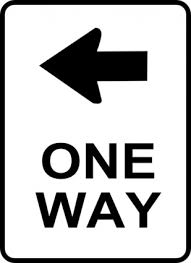I am going to continue my articles (tidbits) on controlling the execution flow of statements in a Transaction SQL (T-SQL) program. Every program has to be deterministic on what step to execute next. Otherwise, the computer would be clueless on what to do next. The only exception to this rule is error handling. A runtime error may cause the program to branch to a error handler and exit the program. Today, I want to talk about how to use the BREAK and CONTINUE statements. I hardly ever use these statements…
Tag: break
Searching Stored SQL – Part 4
There are four main database objects that contain stored SQL: VIEWS, TRIGGERS, FUNCTIONS and STORED PROCEDURES. Earlier today, I created a pattern searching tool for FUNCTIONS. I am going to clone and modify the code so that it will work with VIEWS. Again, I want to examine the dynamic SELECT statement that retrieves the user defined stored procedure names from a given database. This is the key element of the whole program. I took the liberty to modify the original code so that it will work standalone. The current code…
Searching Stored SQL – Part 3
There are four main database objects that contain stored SQL: VIEWS, TRIGGERS, FUNCTIONS and STORED PROCEDURES. Yesterday, I created a pattern searching tool for TRIGGERS. Today, I am going to clone and modify the code so that it will work with FUNCTIONS. Again, I want to examine the dynamic SELECT statement that retrieves the user defined stored procedure names from a given database. This is the key element of the whole program. I took the liberty to modify the original code so that it will work standalone. The current code…
Searching Stored SQL – Part 2
There are four main database objects that contain stored (compiled) SQL: VIEWS, TRIGGERS, FUNCTIONS and STORED PROCEDURES. Yesterday, I created a pattern searching tool for SQL code in STORED PROCEDURES. Today, I am going to clone and modify the code so that it will allow pattern searching on TRIGGERS. First, I want to examine the dynamic SELECT statement that retrieves the user defined stored procedure names from a given database. This is the key element of the whole program. I took the liberty to modify the original code so that…
Searching Stored SQL – Part 1
Today, I am going to start building on some the articles I did in the past. We are going to create tools to pattern search stored SQL statements. Four main objects that contain stored SQL are VIEWS, TRIGGERS, FUNCTIONS and STORED PROCEDURES. Recently at work, I was asked to find all SQL code that had a certain business rule. The task is to return all objects that reference to a certain temperature process named T1. One solution to this problem is to buy a tool like SQL Search from Red…
